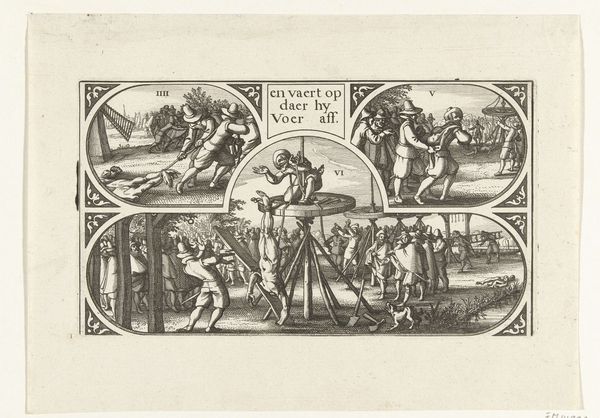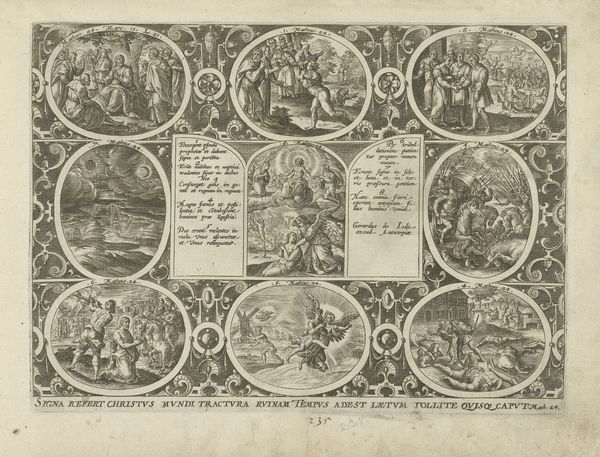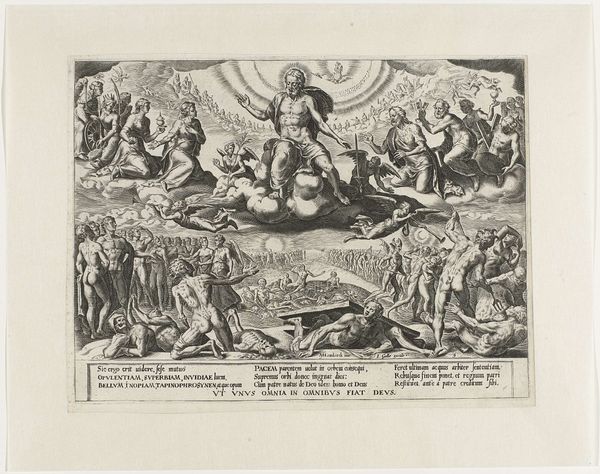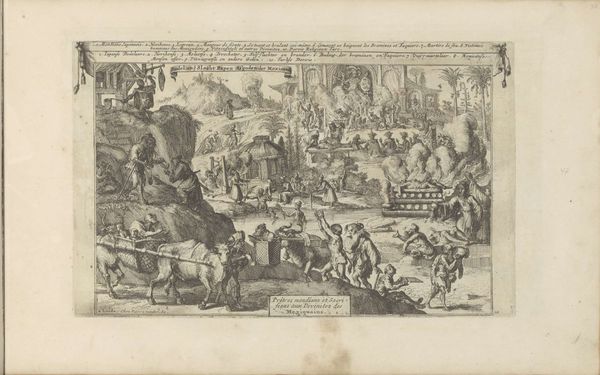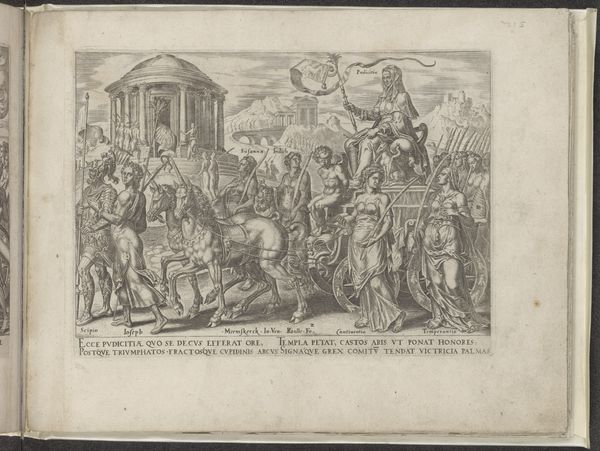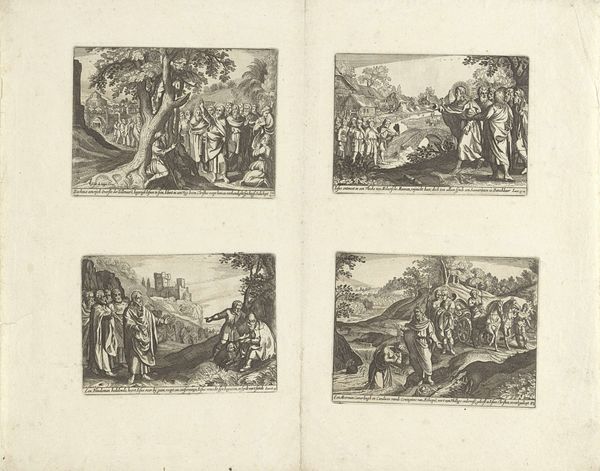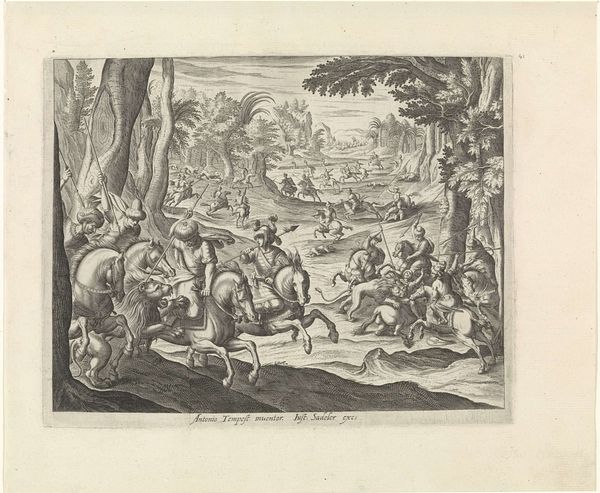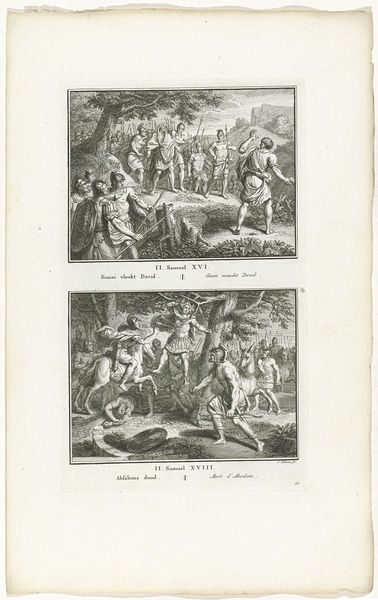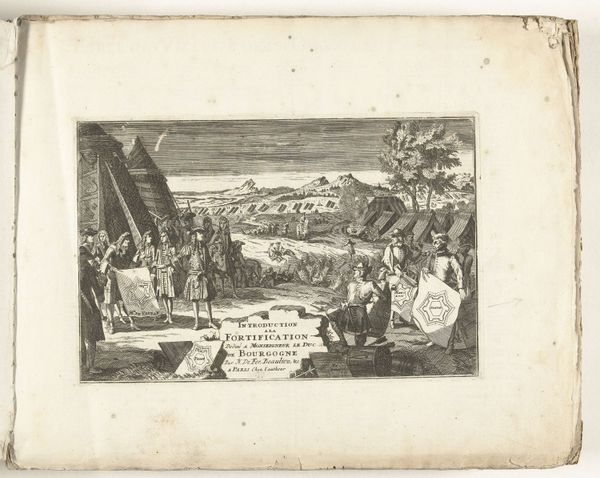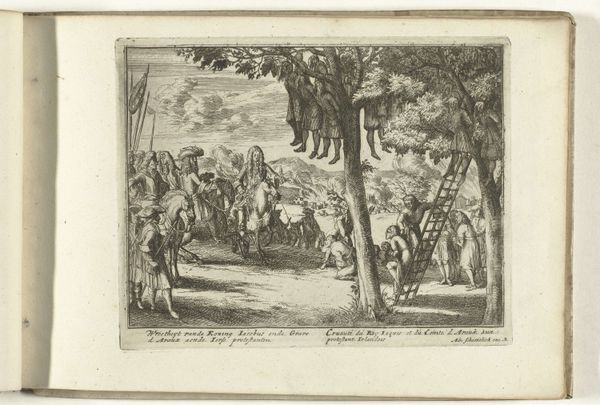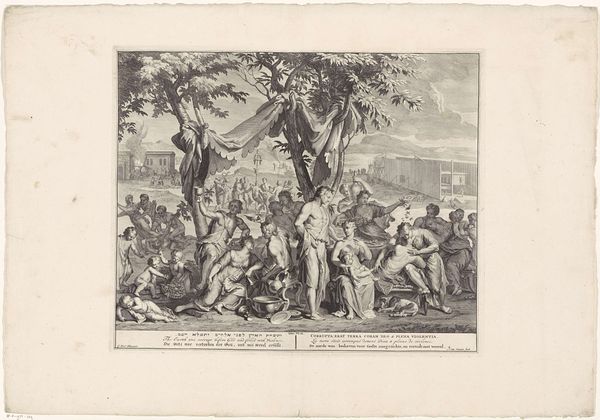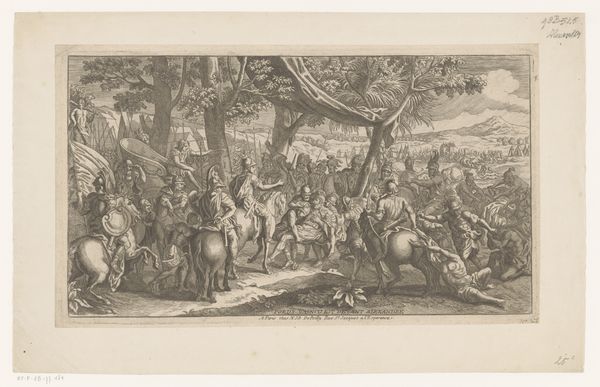
Het ontdekken en wegslepen van de lichaamsdelen van Slatius, Coorenwinder en Gerrits, 1623 1623
0:00
0:00
claesjanszvisscher
Rijksmuseum
print, engraving
#
narrative-art
#
baroque
# print
#
old engraving style
#
landscape
#
cityscape
#
history-painting
#
engraving
Dimensions: height 131 mm, width 233 mm
Copyright: Rijks Museum: Open Domain
Curator: Oh, the chill I get just glancing at it! So much spite! We’re looking at “Het ontdekken en wegslepen van de lichaamsdelen van Slatius, Coorenwinder en Gerrits, 1623” by Claes Jansz. Visscher, dating back to 1623. Editor: It certainly evokes a sense of unrest. Visually, it's a busy composition, almost like a storyboard, sectioned into these framed vignettes, making me think about time and causality. The monochromatic etching brings a harshness to the historical drama, doesn't it? Curator: It's a brutal bit of storytelling through engraving. It captures a moment in Dutch history, that of the public execution of conspirators—imagine the audacity and terror woven into the narrative of betrayal and justice. The figures seem to be writhing even in the supposed calm of the countryside. I sense the hand of power grinding against human vulnerability. Editor: Structurally, the tripartite division directs the eye. Beginning with an agrarian scene transformed to a scene of excavation, followed by dismemberment and then ending in…well, just bodies lying there. The landscape dominates almost equally as the bodies; it doesn’t offer solace. Curator: Exactly, a grim reflection, devoid of redemption. The bat clutching that text at its centre…a bit theatrical, isn’t it? A winged accusation hovering over the butchery, almost gleefully bearing witness to their earthly reckoning, their story etched, or rather scratched, into this plate forever. Justice? Vengeance? Or merely spectacle? I am uncertain! Editor: Symbolically, the bat introduces darkness and the concept of justice or perhaps retribution from above—literally at the center, yes. Considering this through the lens of semiotics, one can deconstruct each of these images—a tilled field is turned to violated graves and bodies, and then to body parts dragged on the earth. Curator: Its narrative thread yanks you along a coarse journey from violation to indignity; that’s powerful. The engraving serves its dark purpose, preserving collective horror… or at least the horror desired to be collectively internalized by the powers that made sure Visscher and his engraver's tool was put to the purpose. Editor: An examination of lines, forms and texture unveils a calculated visual rhetoric. While deeply entrenched in its historical moment, the art pushes beyond temporal context—violence depicted at one time is still violence. Its formal aspects allow for wider readings in today's context too, which is what, for me, elevates it.
Comments
No comments
Be the first to comment and join the conversation on the ultimate creative platform.
